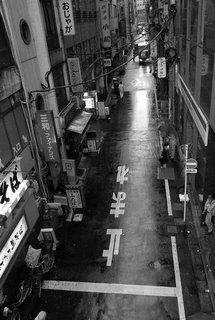Monday, July 24, 2006
Bride, Meiji Jingu

The shrine is a popular place for traditional style weddings, especially on days designated as taian, the luckiest days in the rokuyou of the Japanese calendar. Rokuyou means there are six such days, and these range from the unluckiest (butsumetsu, the day Buddha died) through taian. This calendar is largely still followed even by couples having Western style weddings (increasingly popular nowadays), and the waiting list is longest for taian wedding dates. Arranged marriages (omiyai) are also still practiced in some cases, though they have become rare (<10%).

Meiji Jingu

A landmark familiar to all Japanese, Meiji Jingu is perhaps the finest Shinto shrine (note: in general, shrine = Shinto, temple = Buddhist) in the country. Originally completed in 1920 to honor the Meiji Emperor, it had to be rebuilt after the Second World War. It is constructed of Japanese cypress, except for the massive (12m high) torii gates made from 1500-year-old cypress imported from Taiwan.




